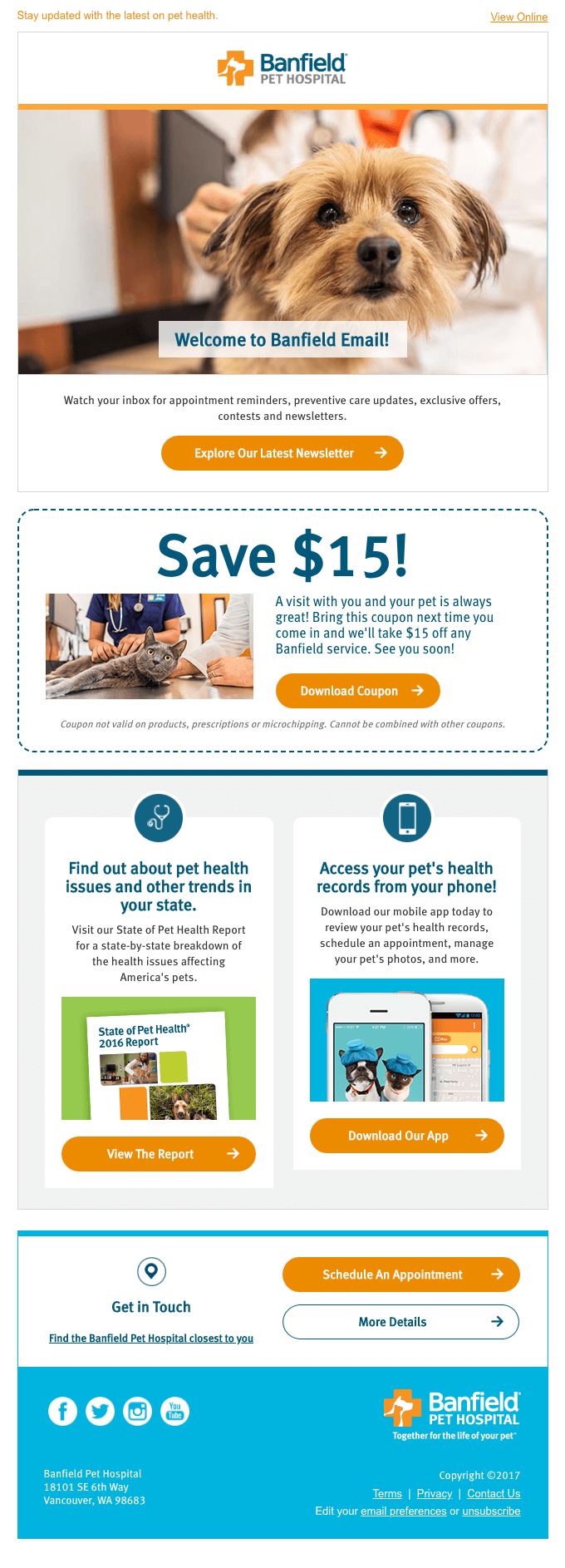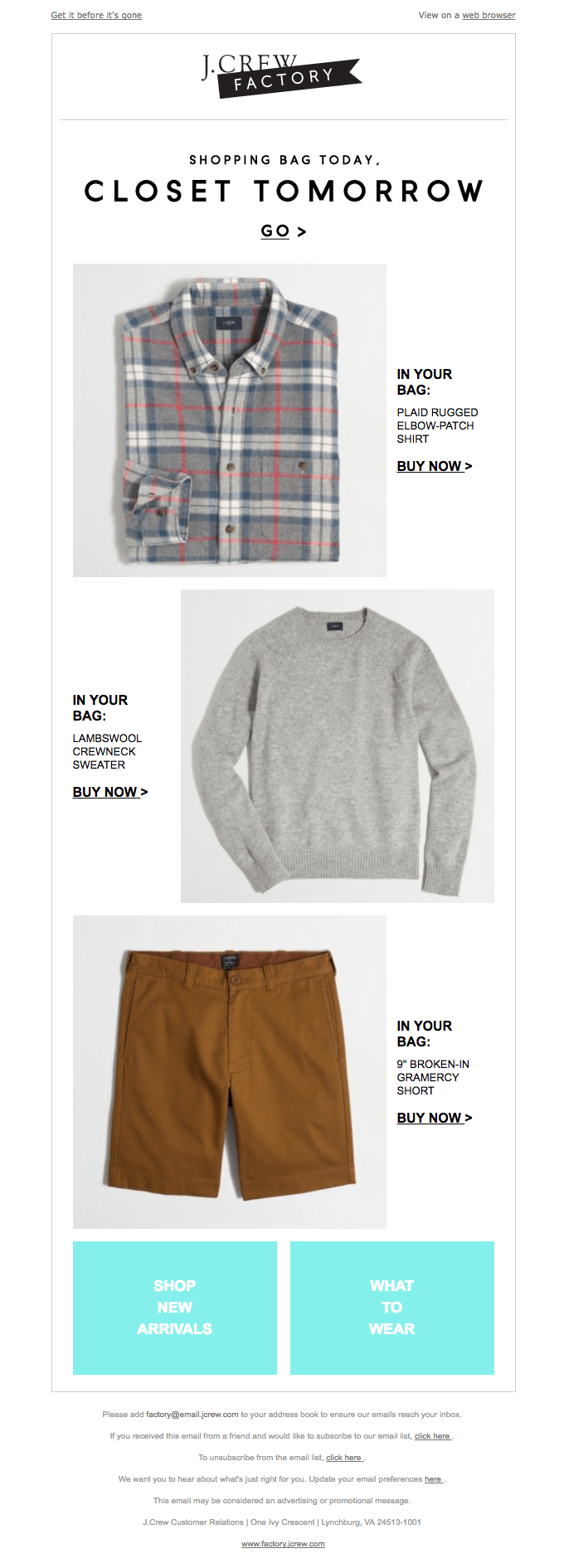Sending an email takes a lot of time and effort. And as your business gets off the ground, sending these emails while you’re juggling so many other things becomes incredibly time-consuming and frustrating.
On a long-term basis, crafting and designing email after email, week after week, just isn’t sustainable. But, thankfully, that’s where email marketing automation can help.
It saves you both time and effort when creating email campaigns, but without detracting anything from your emails—it only adds value. This is because you’ll be sending highly relevant and engaging messages to your customers at the optimum time.
Below, we’ll explore exactly what automation involves and how it can help boost your company’s revenue.
What is email marketing automation?
Email marketing automation is an email campaign triggered by a certain consumer action or sends after a particular amount of time.
For example, when a customer signs up to receive your emails, you know a welcome email is something you need to send them. However, if you have to do this manually each time someone signs up, this is going to take you a lot of time—especially if you start to build your email list quickly.
Therefore, it makes sense to use automation to create an email that’s scheduled to send to every new subscriber.
Despite all of this sounding extremely beneficial, only 51% of marketers currently use automation.
Why?
Often, marketers face a number of stumbling blocks when they start considering automation. This may be an external factor, e.g. the number of resources they have, or it could be an internal factor, e.g. it sounds complicated and they don’t have enough bandwidth to figure it out.
None of these hurdles are difficult to overcome, however, with the right email marketing platform, all of the hard work is taken care of for you—you just need to decide which automated emails you want to send and when. Then, the platform will send a specific email when the relevant action triggers it. This frees up a lot of your efforts while also ensuring you’re reaching out to your customers at the best time.
Marketing automation doesn’t just stop there, either. You can also use it to personalize your emails, sending customers content that’s based on their shopping, browsing, and campaign behavior, as well as their unique demographics.
That’s why sales productivity increases by 14.5% with marketing automation and marketing overheads reduced by 12.2%. Plus, marketing automation software boosts 80% of customer’s leads, also seeing a 77% increase in conversions.
Now, we’ll explore the types of emails you can choose to automate with ease.
5 times to automate emails
When you’re creating an automated set of emails, there are a few extremely important messages that’ll help drive forward your profits. We’ve listed five of these below alongside some stellar examples of ways other organizations have increased brand loyalty and awareness using automation.
1. Welcome emails
Welcome emails are some of the most beneficial messages to automate because when someone signs up to your email list, they are clearly very engaged with your brand. They want to know more, which is why you need to get in front of them as soon as possible.
Unfortunately, a lot of brands will wait several days—even weeks—to send welcome emails, gathering multiple email addresses and sending one large group at once. But by this time, many of the leads will no longer be interested. They may have even gone to a competitor who sent an inviting welcome email as soon as they signed up.
If you aren’t sending a welcome email as soon as someone gives you their email address, you’re missing out. Welcome emails boast the highest open rates (a whopping 50%!) you’ll ever get, meaning that they’re over 80% more effective than a standard newsletter.
Take this example from Banfield Pet Hospital.
Image Source: Really Good Emails
It’s warm, it’s friendly, and it’s informative. It welcomes the reader while also setting their expectations as to what they can expect from future emails (appointment reminders, exclusive offers, newsletters, and so on). And it gives them an exclusive discount.
A lot of customers will sign up to your emails because they’re expecting discounts, which means this could clinch that all-important sale. Plus, letting them know what to expect helps nurture your relationship with them and will keep them engaged.
2. Onboarding emails
After a customer has purchased from you, it’s important your nurturing campaign doesn’t just stop there. You need to encourage these customers to continue buying from you.
Alongside the order confirmation and shipping emails you’ll send (these are must-dos when it comes to automation as they help keep your customer informed and build their confidence in you), you should also consider sending a number of onboarding emails, which help with a customer’s purchase, strengthen your brand-customer relationship, and turn customers into brand advocates.
For example, if you’re a fashion retailer, you could set up a series of emails for anyone who purchases a certain category of clothes. So if someone buys a dress, your first email may be a simple thank you. The second (around 7 days later), some tips on how to style a dress for different occasions. And the third, an invitation to share their outfit on one of your social media channels.
This email from a recent CSS Conference is a great example of an onboarding email. The recipient attended their event and now the organization is following this up with a relevant post that’ll keep them engaged.
Image Source: Campaign Monitor
You could also incorporate these onboarding emails with your customer feedback emails. The latter encourages customers to rate your products and services, which is great for building on your success and creating user-generated content.
3. Lead nurturing emails
Every lead your business gets is incredibly valuable and is the result of a lot of hard work. Whether it’s through a great social media campaign or large investment on Google AdWords, it’s important you take care of these hard-earned leads.
You can do this with an automated email sequence.
For example, if one of your contacts has viewed your offers, downloaded an eBook, or attended an event, they’re getting ready to take the next step in their customer journey. Therefore, you need to create a funnel that guides them through the next stages, taking them from lead to customer.
Start with a series of emails that you send every few days, presenting them with your most informative content. For instance, a case study, customer feedback, or a free trial may be just what they’re looking for.
After creating this relationship, you can then gain their trust and present your end goal: a sale.
When you send each email will depend on your customer base and how long it usually takes for a customer to make a purchase when they’re in this funnel. This means you’ll need to make some tweaks and additions along the way as you learn what is and isn’t working.
4. Abandonment emails
These are particularly useful automated emails if you’re running an e-commerce business. First, how many of your customers are getting to that key purchasing stage before they exit your site?
When this happens, an automated series of emails will gently remind your customers that they’ve left something behind. This will encourage them to go back and complete the sale, especially if you can incentivize them with a discount along the way.
As a general rule of thumb, always include an image of the product(s) they added to their cart and send one of these emails an hour, 12 hours, and/or 24 hours after they carried out this action. This email from J. Crew Factory is a fantastic example of this.
Image Source: Really Good Emails
Second, you might want to try these types of emails for people who have left your site after browsing a particular product. This is harder to gauge than product abandonment because it’s not always clear why they’ve left the site or what they’re looking for.
Nevertheless, you should be able to get a vague idea of their interests from the products they’ve browsed and the categories they’ve looked at.
It’s a good idea to create behavioral triggers based on how much time a customer spends browsing a specific category. Then, send an email that’s relevant to this category, offering product recommendations based on what they were looking at.
This may include one or two products that they clicked on, but add in a few other complementing products as well. They may like the products they viewed but something similar may be all they need to make the purchase.
5. Discounts, birthday, and just-because emails
No one can resist discounts, which is why these emails are great to include in your automated series. As we’ve seen, you can add them as part of your welcome series or product abandonment emails. Equally, you may offer a discount if a customer hasn’t bought from you for a while but then visits your site to look at a product several times. Sending a discount on their second or third visit may be all that’s required to get the sale.
Discounts also work well for automated birthday emails and random customer appreciation emails. Sending these personalized discounts throughout the year will help increase customer loyalty and drive more sales. Plus, if you’re known for giving discounts away, this will incentivize your customers to keep opening your emails, just in case there’s another discount code waiting for them.
Image Source: Campaign Monitor
Wrap up
If you’re new to email marketing automation, why not give one of these strategies a go? Not only do they enable you to send better emails without actually having to press “send,” but they also work wonders for boosting your revenue and customer engagement. All you need is great marketing automation software and some imaginative content.









